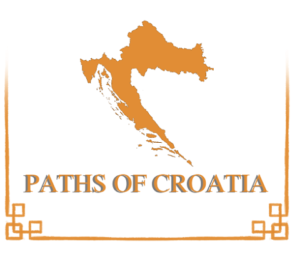
Mushroom hunting is a popular activity in Croatia, and while locals have been doing it for centuries, there’s a rising trend with tourists who like to hunt mushrooms while enjoying the intact Croatian nature.
Mushroom hunting is one of the most popular activities during the autumn season in Croatia, so I thought I should create a guide to mushroom hunting for all of you who want to step into the forest for a true gatherer adventure.
Every season my family, friends, and I go on a mushroom hunt and chestnuts gathering in local forests in Istria, Kvarner, and Gorski kotar.
I’ll dig into the laws, mushroom species, tips for finding the best mushrooms and avoiding dangers, and more!
Croatian law on collecting mushrooms
In Croatia, you are allowed to collect mushrooms in all state-owned forests but you need to first acquire a license from the Croatian forests office.
This permit is very easily obtainable as all you need to do is fill out an online form on the Croatian Forests website after which they’ll approve it and send a PDF format license to your e-mail address.
These permits are free of charge and are used to collect data about mushroom hunters in Croatian forests for the purpose of resource control only.
Although it’s a rare occasion as Croatian forests are big, you must show the license to a controller if they confront you in the forest with mushrooms.
The license can be printed or shown in a digital format on any digital device.
Finally, the license lasts for an entire year in which it was created but it’s important to notice that you’ll need a license for each county separately.
So, if you want to collect mushrooms somewhere in Istria, you’ll need another license for collecting mushrooms in Gorski kotar.
The law demands the following:
- Don’t collect more than 3 kilograms of mushrooms per person with a license
- Don’t sell the collected mushrooms to any 3rd party, they are only for personal use
- Gathering is limited to the fruiting body alone
- Mushrooms can be hand-picked or delicately sliced with a knife
- Ensure that any resulting excavation is concealed with soil
- It is strictly forbidden to harm the mycelium or its natural habitat
- Harvest no more than two-thirds, leaving one-third of the mushrooms to thrive and propagate at the collection site
- Avoid gathering mushrooms that are excessively mature or excessively young
- Do not discard any mushrooms that have already been collected
By obeying these simple rules you can enjoy a mushroom hunting experience in Croatia and enjoy a fine mushroom dish after returning home from the forest!
The fines for breaking the law of not carrying a license or doing some prohibited actions could vary from 150 euros to almost 1000 euros.
In the last 15 years as I have been actively gathering mushrooms in forests I haven’t seen nor heard of anyone getting fined, so don’t panic and just respect the simple rules and you’ll be fine.
The most popular Croatian mushrooms to hunt
| Popular Edible Mushrooms That Grow in Croatia | Description | Appearance |
|---|---|---|
| 1. Boletus Edulis (Penny Bun or Vrganj) | Recognizable by its brown cap and white stem, often referred to as the “king of mushrooms.” | 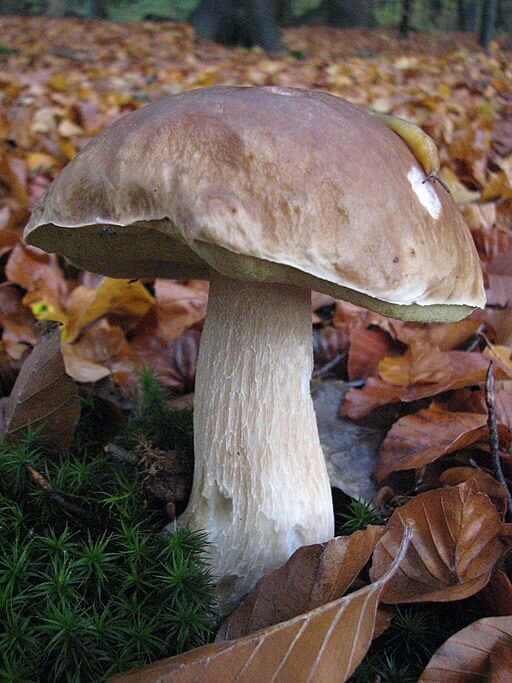 |
| 2. Cantharellus Cibarius (Chanterelle or Bjelkasta Lisičica) | Distinctive bright yellow or orange color with a fruity aroma. | 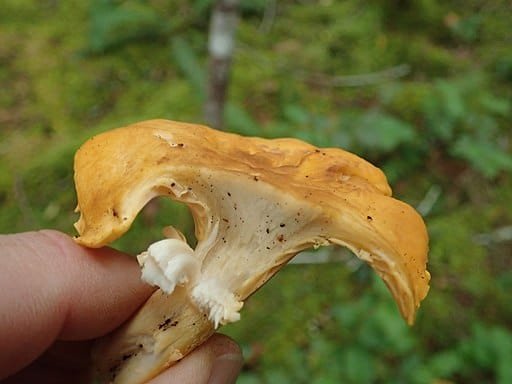 |
| 3. Lactarius Deliciosus (Saffron Milk Cap or Rujnica) | Orange to reddish-brown cap with a milk-like latex when cut. | 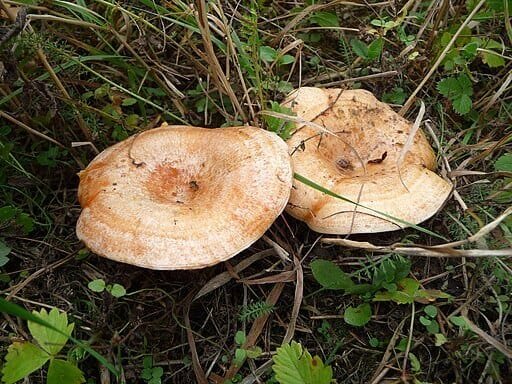 |
| 4. Macrolepiota procera (Parasol mushroom or Sunčanica) | A large, mushroom with a distinctive umbrella-like cap and delicious flavor, commonly found in wooded areas. | 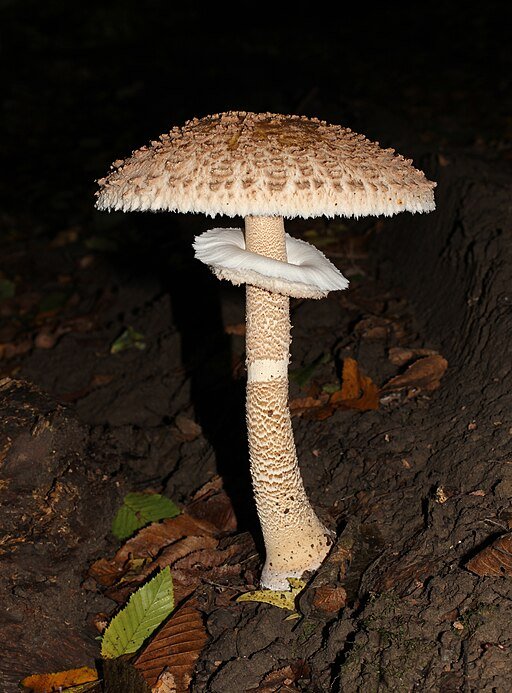 |
| 5. Craterellus cornucopioides (Horn of plenty or Crna truba) | Also known as black trumpet mushroom, it is a black, trumpet-shaped fungus with a rich, earthy flavor, prized in gourmet cuisine. | 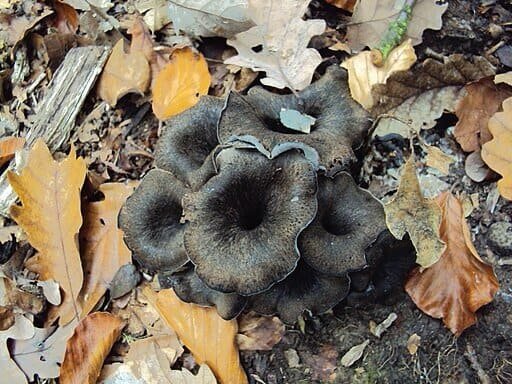 |
| 6. Pleurotus ostreatus (Oyster mushroom or Bukovača) | A popular mushroom with a delicate, oyster-like flavor and a distinctive fan-shaped appearance, often used in various culinary dishes. | 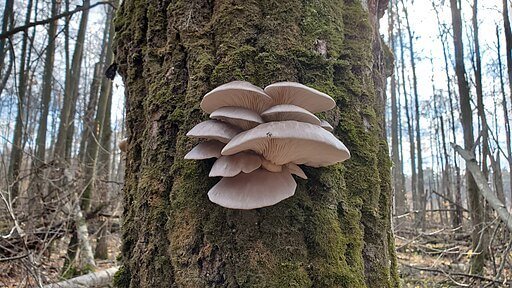 |
| 7. Sparassis crispa (Cauliflower fungus or Kovrčava kokica) | A unique mushroom known for its frilly, ruffled appearance, resembling cauliflower, and a mild, nutty flavor often used in cooking. | 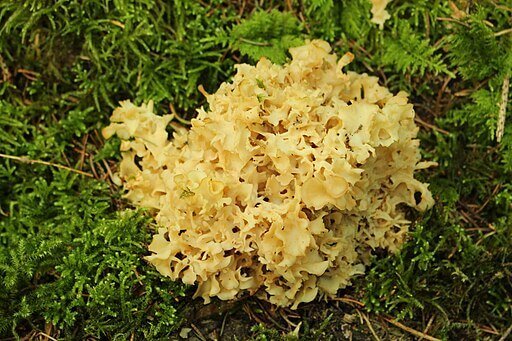 |
| 8. Truffles or Tartufi | Highly prized fungi that grow underground near the roots of certain trees, known for their strong, aromatic flavor used to enhance gourmet dishes | 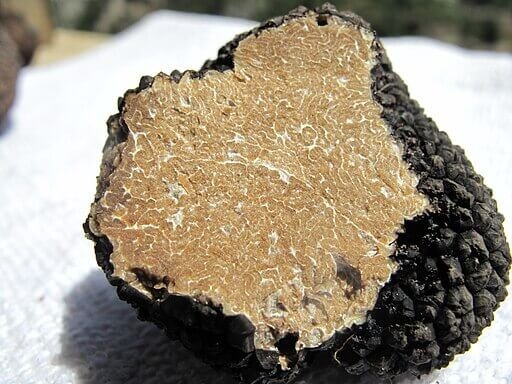 |
These are just some of our favorite mushrooms in Croatia from which we make the finest dishes and products.
If you go on a mushroom hunt in Croatia it’s likely going to involve some of these mushrooms, but there are more cool mushrooms that I haven’t mentioned because they are not as popular and I want to keep this article cohesive.
Safety first!
Remember that safety is paramount when mushroom hunting. If you’re uncertain about the identification of a mushroom, it’s best to leave it in the wild.
The mushrooms I mentioned in the table above are quite easy to identify, but mistakes can still happen!
Consult with experienced foragers, buy a guide and if it’s your first time, don’t go solo or in pairs with other inexperienced mushroom foragers into a mushroom hunt.
Having a person of trust with experience in recognizing mushrooms from edible and non-edible ones next to you is very important.
I won’t continue to mention the poisonous mushrooms here because I don’t want you to use this article as a reliable guide that will give you confidence. This article is only of an informative nature and I don’t plan to go into details which is absolutely necessary when it comes to this topic!
Best time of the year to hunt mushrooms in Croatia
The best time to hunt mushrooms in Croatia largely depends on the specific region and the type of mushrooms you’re hoping to find. However, as a general guideline, the mushroom hunting season in Croatia typically spans from late summer through early autumn. Here’s a breakdown of the best times for mushroom hunting in Croatia:
- Late Summer (August): This marks the beginning of the mushroom hunting season, especially for early varieties like Chanterelles. In some regions, you may also find species like the Penny Bun (Boletus Edulis) and Saffron Milk Caps (Lactarius Deliciosus) starting to appear.
- Early Autumn (September): September is often considered prime time for mushroom hunting in Croatia. It’s when a wide variety of mushrooms emerge, including popular edible species like Boletus Edulis, and Oyster Mushrooms (Pleurotus Ostreatus). The weather is typically mild and conducive to mushroom growth.
- Mid to Late Autumn (October – November): The mushroom hunting season continues into October and sometimes even early November, depending on weather conditions. During this period, you can still find various edible mushrooms, although some species may start to decline as temperatures drop and the season progresses. The 2023 season seems to come with a warm introduction into autumn, so it’s likely that you’ll find mushrooms in the late season.
Keep in mind that mushroom hunting is highly dependent on weather conditions, including rainfall and temperature. It’s crucial to check local weather forecasts and conditions before planning your foraging trips. Additionally, different regions of Croatia may have slightly different mushroom seasons due to variations in climate and ecosystems, so it’s a good idea to connect with local experts or enthusiasts for the most up-to-date information on when and where to hunt for mushrooms.
Recommended tours
Truffle hunts and tastings are one of the biggest attractions in Croatia, and the region of Istria is known for its organized truffle hunt and tasting tours.
I picked two great tours you can choose from if you decide to take a guide and hunt truffles.
The first one offers exciting hunting adventures and tasting of white and black truffles, and the second one offers a whole truffle-based menu to enjoy after an exciting truffle hunt with the Karlić family.
These tours are a must-see for everyone interested in truffles as you’ll not only participate in a hunt but also taste all kinds of lovely dishes, learn history, and information on how to grow and find truffles, and more.
Tips for mushroom hunting in Croatia
Avoid mushrooms near big roads
Just like with anything that grows by the road gets polluted, so it’s better to avoid roads and instead dig deeper into the woods.
Know the type of mushroom you are hunting
Some mushrooms such as Oyster Mushroom grows on or near fallen trees, and logs and prefer decomposing wood, with a preference for oak and beech.
Penny Bun can be found a week after the rain in late summer and early autumn, Parasol mushroom on the other hand loves to grow on open sunny areas with grass and rich soil.
These are primary mushrooms I hunt with friends and family, but there’s something unique about every mushroom you can research that will help you to track it down!
Avoid private property
Some regions such as under the mountain Učka and plenty of places around Istria are privately owned.
Stick to the state regions as some owners could become angry if they see you exploring their piece of land.
Private lands are marked, but it’s easy to miss the signs and unknowingly end up on someone’s property, so be cautious or go with a guide!
Be careful in national and nature parks
Some species of mushrooms and plants are protected in regions of national and nature parks, so be sure to do research on the region and know what you can pick up from the earth and what’s protected.
